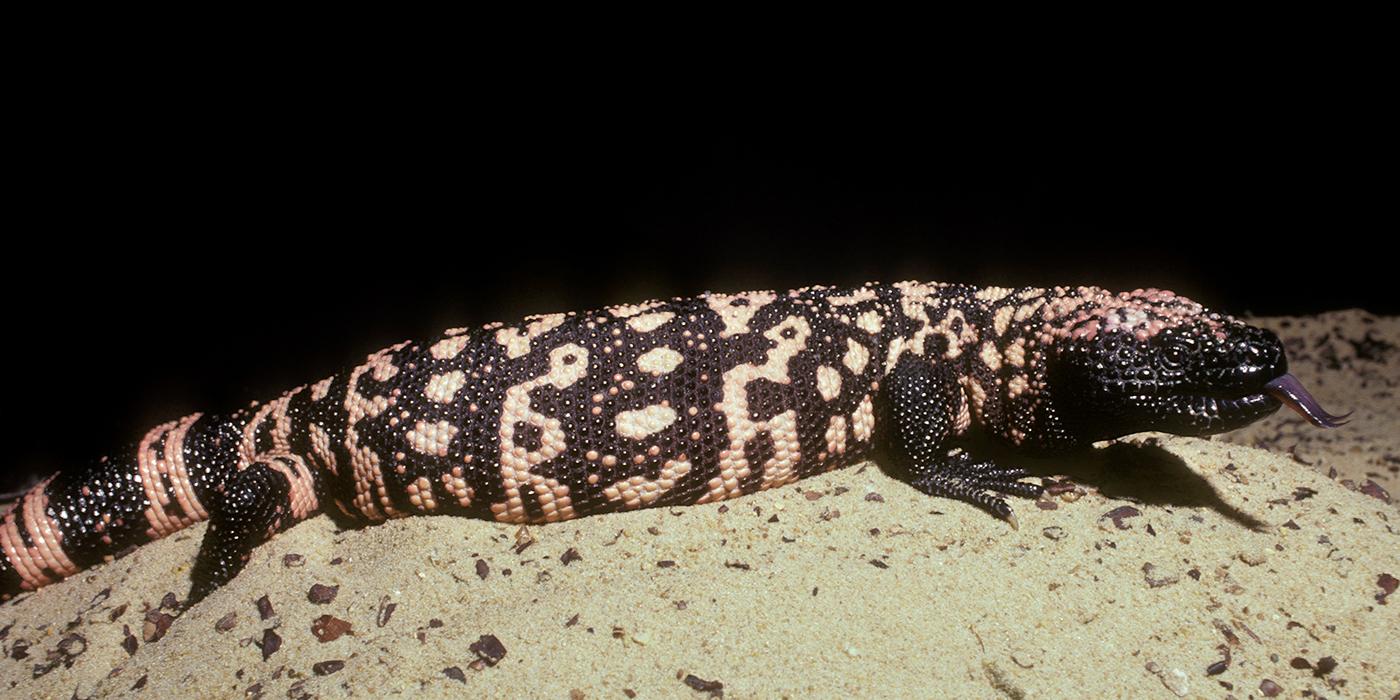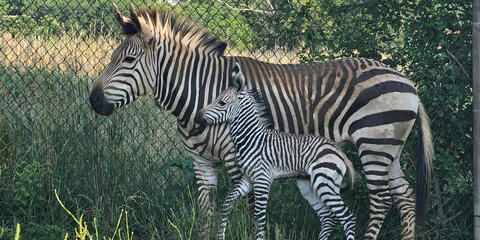Physical Description
Gila monsters are black, patterned along their backs with contrasting pink or orange. In the southern subspecies, the reticulated Gila monster, the light markings are broken up to form a reticulated pattern. In the northern subspecies, the banded Gila monster, the light markings generally form an unbroken band across the back.
Size
The largest lizards native to the United States, Gila monsters can measure up to about 22 inches (56 centimeters) in total length.
Native Habitat
The Gila monster lives primarily in Arizona and Mexico, the extreme southeastern corner of California, the southern tip of Nevada, and the southwestern corners of Utah and New Mexico. Its name comes from the Gila River, where the lizards are common.
Gila monsters are desert dwellers, living near washes and arroyos and in semiarid rocky regions of desert scrub or grasslands. Gila monsters also seem to prefer rocky foothills and avoid open flats and agricultural areas. They can live at elevations up to 5,000 feet (1,500 meters).
Lifespan
They normally live 20 or more years in human care, though the record is 36 years.
Food/Eating Habits
The Gila monster is one of only small number of venomous lizards (including the Mexican beaded lizard, the Komodo dragon and some Australian species). It can bite quickly and hold on tenaciously. Rather than injecting venom through hollow fangs like venomous snakes, Gilas have enlarged, grooved teeth in their lower jaw. When they bite, their powerful jaws chew the venom in through capillary action along the grooves in these teeth. Gila monster venom is about as toxic as that of a western diamondback rattlesnake. However, a relatively small amount of venom is introduced in a Gila bite. Gila monsters may hold onto a predator for more than ten minutes. There is no antivenin for Gila bites.
Gila monsters most often raid nests to prey on small birds and eggs. They also catch small mammals, lizards, frogs, insects and carrion. They can eat up to one-third of their body weight in one meal.
Their large size means they can store more energy than smaller lizards. They store fat both in their tails and their bodies. Their low metabolic rates and ability to eat large meals combined with their capacity to store fat, make frequent searching for food unnecessary. Therefore, Gila monsters often stay hidden underground. It has been suggested that Gilas can consume all the calories they need for a year in three or four large meals. Their top speed is only 1.5 miles per hour (2.4 kilometers per hour).
At the Smithsonian's National Zoo, Gila monsters eat mice every other week. Occasionally, they get a hard-boiled egg.
Sleep Habits
They are diurnal, but most active in the morning. Gila monsters spend most of their lives hidden below the ground. Most of their aboveground activity occurs in three months in the spring.
Social Structure
They are usually solitary animals, but do gather in communal areas in the spring for mating. Gila monsters have a home range of about 1 square mile (1.6 square kilometers).
Reproduction and Development
Gila monsters mate in the spring, which is also when food is most abundant. In late April to early June, courtship and male-to-male combat takes place. Females lay two to 12 leathery eggs that spend the winter below ground and hatch the next spring after 120 to 150 days.
Hatchlings are about 6 inches (15 centimeters) long and are miniature replicas of their parents. Hatchlings are on their own immediately.
Conservation Efforts
They are threatened by habitat destruction, including overgrazing, truck farming and the planting of cotton. They are protected under Arizona law.
Help this Species
- Share the story of this animal with others. Simply raising awareness about this species can contribute to its overall protection.




